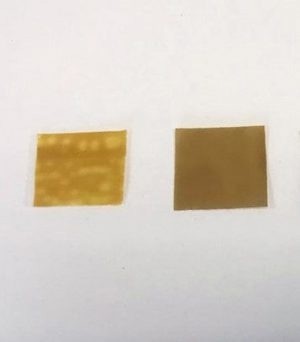Metal-organic frameworks (MOFs), which are highly porous and diverse metal complexes, have the potential for a wide range of applications, including drug delivery and environmental remediation.
 Membrane films containing MOFs, like those shown here, that produce nitric oxide could provide antibacterial properties in medical devices. Image Credit: Adapted from ACS Applied Materials & Interfaces 2023.
Membrane films containing MOFs, like those shown here, that produce nitric oxide could provide antibacterial properties in medical devices. Image Credit: Adapted from ACS Applied Materials & Interfaces 2023.
However, there is still a need for a deeper understanding of their functioning, particularly when integrated into polymers. In a recent study published in ACS Applied Materials & Interfaces, researchers have successfully developed and characterized thin films containing nitric oxide (NO)-storing MOFs, unveiling novel antibacterial properties.
Investigating the interactions between MOFs and polymers within membranes can be a daunting task, necessitating intricate analytical techniques and substantial resources. In prior research, Russell E. Morris and his team explored the interface between a nickel-containing MOF and polyurethane.
However, the focused-ion-beam scanning electron microscopy (FIB-SEM) method employed in their study had the potential to inadvertently modify or harm both the polymers and MOFs. As a solution to this issue, the same research group, in collaboration with Zeiss Microscopy, has introduced a new FIB-SEM technique incorporating cryogenics to enhance the stability of MOF composites.
To assess this, in conjunction with researchers from Colorado State University, they generated three different membranes. These membranes featured a nickel MOF known as CPO-27-Ni, a copper MOF referred to as CuBTTri, or a combination of both.
Subsequently, employing their cryogenic FIB-SEM technique, they were able to observe the MOF particles in finer detail compared to other imaging methods. The images also demonstrated that the metal complexes were uniformly dispersed throughout the membranes without any overlap.
The researchers then proceeded to investigate the membranes' capacity to release nitric oxide (NO), a molecule known for its antibacterial properties and potential biomedical applications. In experimental trials, the MOF-embedded membranes exhibited diverse triggers and responses:
- CPO-27-Ni exhibited a rapid, short burst release of NO in response to moisture.
- CuBTTri acted as a catalyst when exposed to the tripeptide S-nitrosoglutathione (GSNO), a natural source of NO in the human body, resulting in sustained NO release.
- When CPO-27-Ni and CuBTTri were combined in a membrane, it provided both rapid and sustained NO delivery. This occurred when the membrane was sequentially exposed to moisture and then to GSNO.
The researchers have found that the combination of nickel and copper MOFs resulted in a composite material that effectively established a two-stage NO delivery system. They propose that this dual-phase delivery system could find valuable applications in medical devices, offering both immediate antibacterial effects and long-term protection against microbial fouling.
The research was funded by the European Research Council grant ADOR, the EPSRC Light Element Analysis Facility Grant, and the EPSRC Strategic Equipment Resource Grant.
Journal Reference:
Ettlinger, R., et al. (2023) Mixed Metal–Organic Framework Mixed-Matrix Membranes: Insights into Simultaneous Moisture-Triggered and Catalytic Delivery of Nitric Oxide using Cryo-scanning Electron Microscopy. ACS Applied Materials & Interfaces. doi.org/10.1021/acsami.3c11283.